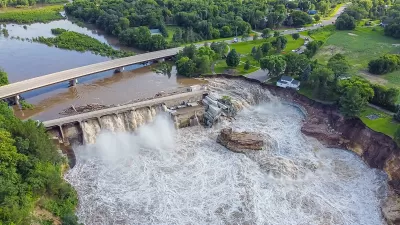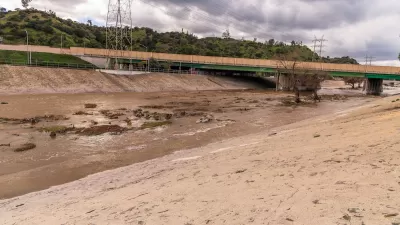Cities and suburbs face billions of dollars in investments and repairs to comply with Clean Water Act standards. The NRDC outlines some of the urban water conservation methods municipalities can take to reduce stress on these infrastructure systems.
Despite decades of under-investing, cities and suburbs are still held responsible for billions of dollars towards maintaining and improving infrastructure in compliance with the Clean Water Act. For many municipalities, it is a balancing game between keeping up with increasing water demand due to growing populations, and maintaining water supply through sewage treatment and stormwater controls. With looming climate change and extreme weather conditions, agencies are faced with an immense challenge.
A new report from the Natural Resources Defense Council advances treatments to lower water demand through various programs and policies, which in turn would "also have the potential to improve efficiency of certain wastewater treatment processes at existing facilities, [and yield] lower operating costs and extended equipment replacement periods."
A few methods are outlined in the report, such as "promoting or mandating the use of water efficient fixtures, appliances, and landscapes, as well as graywater and blackwater reuse systems", as well as "improved metering, volumetric billing, and conservation pricing, for drinking water, wastewater, and stormwater." Another suggestion is to install cisterns and rain barrel through incentives or rebates to capture rainwater and limit discharge of stormwater run off.
The report outlines best practices from different municipalities, and recommends policy changes/ resources cities and suburbs can take advantage of to uphold Clean Water Act regulations.
FULL STORY: Waste Less, Pollute Less: Using Urban Water Conservation to Advance Clean Water Act Compliance

Study: Maui’s Plan to Convert Vacation Rentals to Long-Term Housing Could Cause Nearly $1 Billion Economic Loss
The plan would reduce visitor accommodation by 25% resulting in 1,900 jobs lost.

Alabama: Trump Terminates Settlements for Black Communities Harmed By Raw Sewage
Trump deemed the landmark civil rights agreement “illegal DEI and environmental justice policy.”

Why Should We Subsidize Public Transportation?
Many public transit agencies face financial stress due to rising costs, declining fare revenue, and declining subsidies. Transit advocates must provide a strong business case for increasing public transit funding.

Paris Bike Boom Leads to Steep Drop in Air Pollution
The French city’s air quality has improved dramatically in the past 20 years, coinciding with a growth in cycling.

Why Housing Costs More to Build in California Than in Texas
Hard costs like labor and materials combined with ‘soft’ costs such as permitting make building in the San Francisco Bay Area almost three times as costly as in Texas cities.

San Diego County Sees a Rise in Urban Coyotes
San Diego County experiences a rise in urban coyotes, as sightings become prevalent throughout its urban neighbourhoods and surrounding areas.
Urban Design for Planners 1: Software Tools
This six-course series explores essential urban design concepts using open source software and equips planners with the tools they need to participate fully in the urban design process.
Planning for Universal Design
Learn the tools for implementing Universal Design in planning regulations.
Smith Gee Studio
Alamo Area Metropolitan Planning Organization
City of Santa Clarita
Institute for Housing and Urban Development Studies (IHS)
City of Grandview
Harvard GSD Executive Education
Toledo-Lucas County Plan Commissions
Salt Lake City
NYU Wagner Graduate School of Public Service




























